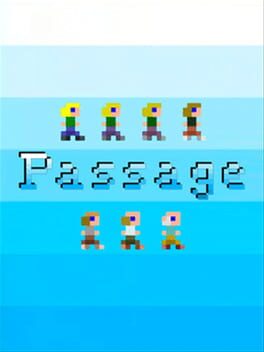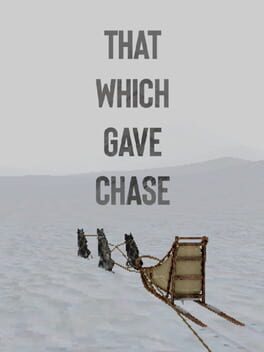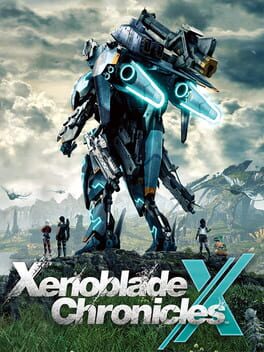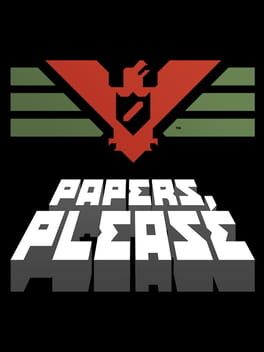RealmW
Bio
authoritarian lesbian
authoritarian lesbian
Badges

1 Years of Service
Being part of the Backloggd community for 1 year

Well Written
Gained 10+ likes on a single review

Liked
Gained 10+ total review likes

Best Friends
Become mutual friends with at least 3 others

Noticed
Gained 3+ followers
028
Total Games Played
000
Played in 2024
000
Games Backloggd
Recently Played See More
Recently Reviewed See More
Viscerally, obsessively fearful of the transsexual body.
Her taste is the sick sweetness of rot and fermentation, contagion carried on spores and between lips. Her breasts are diseased mutation, parasitic growth, predatory biology–and perfectly erotic. A form which is divine but demiurgic; perniciously, irresistibly seductive in its base materiality. There is nothing more desirable, and there is nothing more evil. There’s nothing you will ever want to fuck more than Her.
Her taste is the sick sweetness of rot and fermentation, contagion carried on spores and between lips. Her breasts are diseased mutation, parasitic growth, predatory biology–and perfectly erotic. A form which is divine but demiurgic; perniciously, irresistibly seductive in its base materiality. There is nothing more desirable, and there is nothing more evil. There’s nothing you will ever want to fuck more than Her.
There has been no Zelda game with a compelling reason to exist since 2006. I say this at the beginning of a sort-of Tears of the Kingdom review not (just) to be provocative, but as a clarification: I do not think that either Tears or its predecessor Breath of the Wild are a turning point in the history of the series. Skyward Sword, while strictly speaking a better game, is equally disinterested in (or at least incapable of understanding) the series’ thematic throughlines, to its narrative detriment. This is not a quality unique to the Switch Zelda titles–more or less everything I will say about them can be said, to some extent, of Skyward Sword. This specific disconnect, however, between the work and the series it exists within, is the source of the pervasive narrative hollowness present in both Tears of the Kingdom and Breath of the Wild. So to understand this game fully, we first have to first consider: What was Zelda?
What follows is my best, abridged answer to this question.
History in Hyrule is a purely rhetorical object, the stage on which power and order and God are vindicated. Mere decades in the past are shrouded in an obscuring haziness, centuries ago are as close as prehistory. There is no concrete existence before narrative, nor after. It is a world full of ruins whose builders are no longer known, covered in the scripts of languages no longer spoken, half-healed scars on the landscape of the Kingdom acting as the only reminders of what it destroyed. There is a past but there is no history, symbology without translation, meaning without object. There is the implication of a historical arc but no materiality to it--the Kingdom lies forever at the arc's end, in its final hours, an empire dying with its entrails spilled-out over the landscape. Hyrule is decline, failure, rot, cowardice, corruption. And yet is also sacred, untouchable, eternal, right. It is God's power on earth–if not God herself–self-justifying in its persistence and authority. This is the central tension of Hyrule as institution and as historical actor. It is the object of constant condemnation, but never allowed to reach the conclusion of its character, its earned justice in annihilation. There is no historical progression, no conclusion, only singular Power, and infinite iterations of the only moment in time that will ever exist.
Twilight Princess was textually obsessed with these tensions and contradictions, with arbitrary power and fate and historical narrative, and the profound emptiness that underlies it all. There is no game in the series with more pointed disdain for the theorist, for any attempt to place it into linear historical cohesion with its predecessors. It is at once a sequel to Ocarina and Majora, not only as a pair but individually, but also to Wind Waker, to A Link to the Past, to The Adventure of Link, yet at the same time comes after none of them, only another expression of the single moment which they all occupy. This continuity, then, derives not from literal chronology, but from Twilight Princess’s central interest in the thematic fabric of the series, and the conversation it engages in with each of those texts.
In contrast, Breath of the Wild and Tears of the Kingdom have a masturbatory infatuation with their own histories, their lore. Scraps of this lore are scattered throughout every corner of their expansive worlds, in the throwaway dialogue of Mii-faced NPCs, in cryptic item descriptions, in books and journals left open by environmental-storytelling-conscious homeowners. These tidbits are more textbook than they are narrative; they have nothing particularly meaningful to say about the games’ world or ideas, only dry listings of people or events, implications of connections to other lore in place of themes. Similarly, prior titles are constantly referenced, represented aesthetically, but never engaged with. These signifiers exist to be recognized, to beg the imagining of chronological coherence, but not to be taken as conversation with any previous work. All of this combines to create a “narrative structure” perfectly attuned to theorizing, in the most YouTube sense of the word–devoid of semantic meaning, but ideal for a ten minute and one second-long video whose title contains the word “HIDDEN” or “EXPLAINED!”. It gives both games a profoundly cynical, algorithmically-optimized feel. Considering how heavily Tears of the Kingdom’s pre-release marketing leaned on the promise that the game would reveal the truth about the Zonai–a favorite subject of the theorizing crowd–it can reasonably be said that in many ways, and to many consumers, the conceit of Tears was not in its position as a thematic or even narrative continuation of Breath of the Wild, but rather as a work which would elucidate its predecessor’s lore. At a certain point you have to wonder if it might just have been more expedient for Nintendo to have canceled Tears outright and simply sent a bullet-pointed list of facts to Zeltik.
In a 2016 interview with Famitsu magazine regarding Twilight Princess HD, Zelda producer Eiji Aonuma is quoted as saying “While making the latest title for The Legend of Zelda [Breath of the Wild], when I look at this remake, I feel like this is the origin point of the new title we’re making right now. After playing this game you may have some “Oh I see!” moments when playing the [upcoming] new game, so I’ll be glad if you play Twilight Princess HD while waiting in anticipation for the latest title of Legend of Zelda.” At the time, speculation was rampant as to what this could mean for the new title. Returning characters? Locations? God forbid–gasp–themes!? In the months following Breath of the Wild’s release, however, speculation turned to confusion as it became apparent that there was no clearly identifiable throughline between the two games. It took me over six years, until my reflection on my experience with Tears of the Kingdom, to have my “Oh, I see!” moment. Breath of the Wild is loaded with references to Twilight Princess–you can visit the Great Bridge of Hylia, or the Arbiter’s Grounds, or Faron Woods. The game’s designs for Castle Town and Hyrule Castle itself clearly draw more from their Twilight appearances than anywhere else–even Hyrule’s generally roman-inspired architecture is an aesthetic language lifted from the 2006 title. On a certain beach in the southernmost portion of Breath of the Wild’s map, you can even find a short quest centered around an object that looks suspiciously like the Mirror of Twilight. But what does the presence of these things have to say, really, about either the game that they exist within, or that which they reference? The answer is quite transparently, I think, nothing, because both titles in the Switch Zelda duology are fundamentally uninterested in the games that came before them. These symbols are purely connective tissue between two products, interacting only on the level of recognition. In place of textual synthesis is brand synergy. Breath of the Wild (and, by extension, Tears) is popularly placed as the “convergence of the timeline”, the game that sits at the endpoint of every prior title, drawing each branch back to a single point. Given that there is no corresponding thematic interaction to the aesthetics that have produced this belief, each of these previous works is itself, in a sense, reduced simply to lore.
It is remarkable that in a series so wrapped up in fatalism and futility, it is the games that have the least to say about those ideas which feel by far the most bleak–not only individually, but in what they represent for the future of Zelda as a whole. After reaching what is increasingly clearly its natural narrative conclusion more than a decade and a half ago, we are left with a series which has run its course, but which will never be laid to rest. There is no end of the arc here–only a state of decay, in perpetuity.
What follows is my best, abridged answer to this question.
History in Hyrule is a purely rhetorical object, the stage on which power and order and God are vindicated. Mere decades in the past are shrouded in an obscuring haziness, centuries ago are as close as prehistory. There is no concrete existence before narrative, nor after. It is a world full of ruins whose builders are no longer known, covered in the scripts of languages no longer spoken, half-healed scars on the landscape of the Kingdom acting as the only reminders of what it destroyed. There is a past but there is no history, symbology without translation, meaning without object. There is the implication of a historical arc but no materiality to it--the Kingdom lies forever at the arc's end, in its final hours, an empire dying with its entrails spilled-out over the landscape. Hyrule is decline, failure, rot, cowardice, corruption. And yet is also sacred, untouchable, eternal, right. It is God's power on earth–if not God herself–self-justifying in its persistence and authority. This is the central tension of Hyrule as institution and as historical actor. It is the object of constant condemnation, but never allowed to reach the conclusion of its character, its earned justice in annihilation. There is no historical progression, no conclusion, only singular Power, and infinite iterations of the only moment in time that will ever exist.
Twilight Princess was textually obsessed with these tensions and contradictions, with arbitrary power and fate and historical narrative, and the profound emptiness that underlies it all. There is no game in the series with more pointed disdain for the theorist, for any attempt to place it into linear historical cohesion with its predecessors. It is at once a sequel to Ocarina and Majora, not only as a pair but individually, but also to Wind Waker, to A Link to the Past, to The Adventure of Link, yet at the same time comes after none of them, only another expression of the single moment which they all occupy. This continuity, then, derives not from literal chronology, but from Twilight Princess’s central interest in the thematic fabric of the series, and the conversation it engages in with each of those texts.
In contrast, Breath of the Wild and Tears of the Kingdom have a masturbatory infatuation with their own histories, their lore. Scraps of this lore are scattered throughout every corner of their expansive worlds, in the throwaway dialogue of Mii-faced NPCs, in cryptic item descriptions, in books and journals left open by environmental-storytelling-conscious homeowners. These tidbits are more textbook than they are narrative; they have nothing particularly meaningful to say about the games’ world or ideas, only dry listings of people or events, implications of connections to other lore in place of themes. Similarly, prior titles are constantly referenced, represented aesthetically, but never engaged with. These signifiers exist to be recognized, to beg the imagining of chronological coherence, but not to be taken as conversation with any previous work. All of this combines to create a “narrative structure” perfectly attuned to theorizing, in the most YouTube sense of the word–devoid of semantic meaning, but ideal for a ten minute and one second-long video whose title contains the word “HIDDEN” or “EXPLAINED!”. It gives both games a profoundly cynical, algorithmically-optimized feel. Considering how heavily Tears of the Kingdom’s pre-release marketing leaned on the promise that the game would reveal the truth about the Zonai–a favorite subject of the theorizing crowd–it can reasonably be said that in many ways, and to many consumers, the conceit of Tears was not in its position as a thematic or even narrative continuation of Breath of the Wild, but rather as a work which would elucidate its predecessor’s lore. At a certain point you have to wonder if it might just have been more expedient for Nintendo to have canceled Tears outright and simply sent a bullet-pointed list of facts to Zeltik.
In a 2016 interview with Famitsu magazine regarding Twilight Princess HD, Zelda producer Eiji Aonuma is quoted as saying “While making the latest title for The Legend of Zelda [Breath of the Wild], when I look at this remake, I feel like this is the origin point of the new title we’re making right now. After playing this game you may have some “Oh I see!” moments when playing the [upcoming] new game, so I’ll be glad if you play Twilight Princess HD while waiting in anticipation for the latest title of Legend of Zelda.” At the time, speculation was rampant as to what this could mean for the new title. Returning characters? Locations? God forbid–gasp–themes!? In the months following Breath of the Wild’s release, however, speculation turned to confusion as it became apparent that there was no clearly identifiable throughline between the two games. It took me over six years, until my reflection on my experience with Tears of the Kingdom, to have my “Oh, I see!” moment. Breath of the Wild is loaded with references to Twilight Princess–you can visit the Great Bridge of Hylia, or the Arbiter’s Grounds, or Faron Woods. The game’s designs for Castle Town and Hyrule Castle itself clearly draw more from their Twilight appearances than anywhere else–even Hyrule’s generally roman-inspired architecture is an aesthetic language lifted from the 2006 title. On a certain beach in the southernmost portion of Breath of the Wild’s map, you can even find a short quest centered around an object that looks suspiciously like the Mirror of Twilight. But what does the presence of these things have to say, really, about either the game that they exist within, or that which they reference? The answer is quite transparently, I think, nothing, because both titles in the Switch Zelda duology are fundamentally uninterested in the games that came before them. These symbols are purely connective tissue between two products, interacting only on the level of recognition. In place of textual synthesis is brand synergy. Breath of the Wild (and, by extension, Tears) is popularly placed as the “convergence of the timeline”, the game that sits at the endpoint of every prior title, drawing each branch back to a single point. Given that there is no corresponding thematic interaction to the aesthetics that have produced this belief, each of these previous works is itself, in a sense, reduced simply to lore.
It is remarkable that in a series so wrapped up in fatalism and futility, it is the games that have the least to say about those ideas which feel by far the most bleak–not only individually, but in what they represent for the future of Zelda as a whole. After reaching what is increasingly clearly its natural narrative conclusion more than a decade and a half ago, we are left with a series which has run its course, but which will never be laid to rest. There is no end of the arc here–only a state of decay, in perpetuity.







